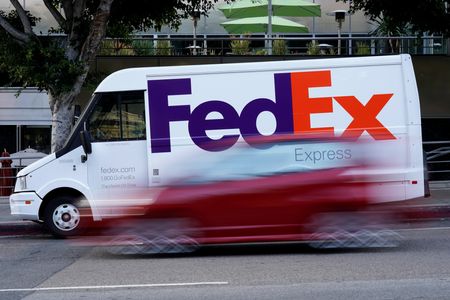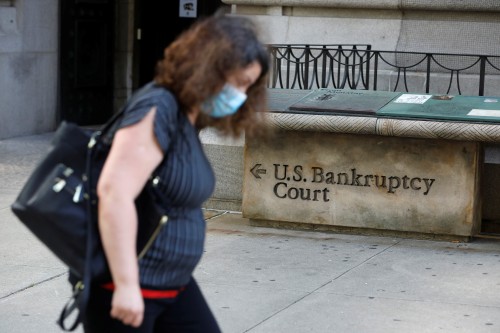By Akash Sriram
(Reuters) -Rivian forecast modest gross profit this year, after reporting its first-ever positive earnings margin in the fourth quarter, as factory upgrades and supplier renegotiations improved efficiency at the EV maker.
Shares of the Irvine, California-based EV maker were up about 4% in extended trading.
However, Rivian projected an unexpected drop in deliveries for the year as an uncertain economy and shifting consumer preferences temper demand for its more expensive electric pickup trucks and SUVs.
Its gross profit stood at $170 million in the fourth quarter, compared with a loss of $606 million a year earlier.
The company also expects higher costs from U.S. President Donald Trump’s plans to impose tariffs on Mexico and Canada.
“We have a supply chain that does have a footprint in both Mexico and Canada, and so large tariffs being applied will just translate to higher costs for us,” CEO RJ Scaringe told Reuters.
“There is such a high level of uncertainty that will ultimately impact consumer behavior and top-line revenue,” he added.
Rivian forecast annual deliveries of between 46,000 and 51,000 vehicles, lower than Wall Street expectations of 55,520, according to 15 analysts polled by Visible Alpha. Last year, it delivered 51,579 units.
The EV maker is also planning to halt production for more than a month in the second half of 2025 to upgrade its assembly lines, as it gears up to launch the Tesla Model Y-rivaling R2 vehicle and start its deliveries early next year.
EV makers are staring at a tough market, with Elon Musk-led market leader Tesla reporting its first drop in annual sales in 2024.
Electric big rig manufacturer Nikola recently filed for Chapter 11 bankruptcy protection and said it would pursue a sale of its assets after struggling with rapid cash burn and funding challenges amid weak demand.
Rivian, too, continues to burn billions of dollars in cash every year. However, the rate at which it expends cash is expected to slow as profitability improves along with its sales volumes.
Revenue for the last three months of the year stood at $1.73 billion, compared with analysts’ average estimate of $1.4 billion, according to LSEG data.
(Reporting by Akash Sriram in Bengaluru; Editing by Anil D’Silva)





